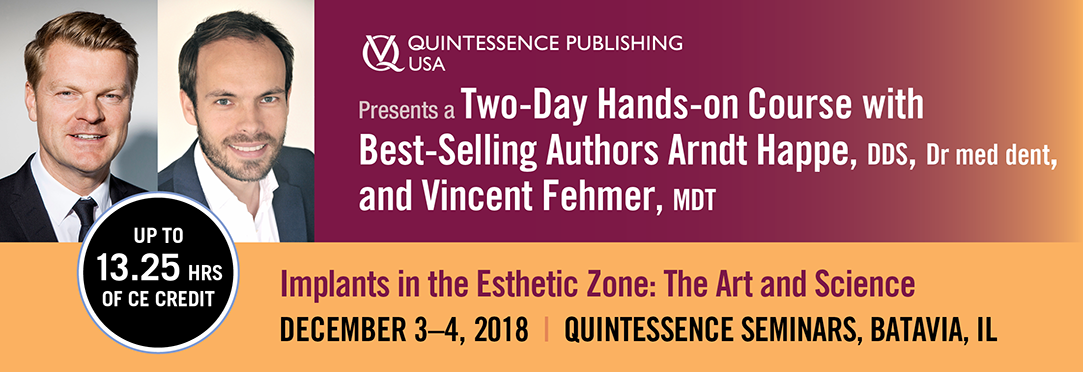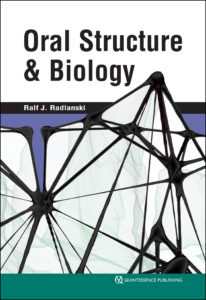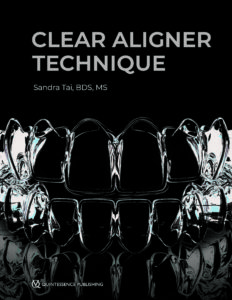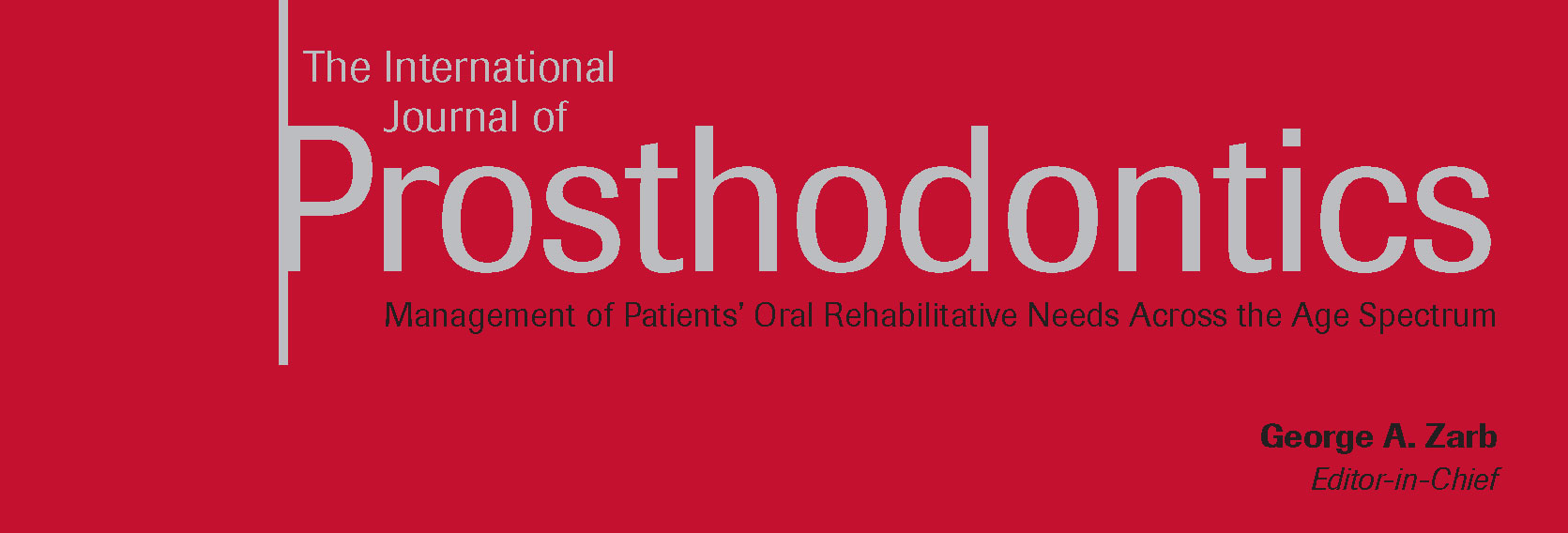July Monthly Special
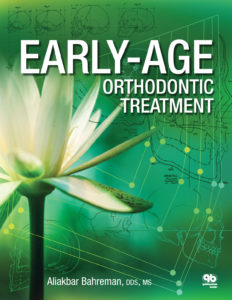 Early-Age Orthodontic Treatment
Early-Age Orthodontic Treatment
Aliakbar Bahreman
This book presents readers with the information necessary to understand the morphogenesis of orthodontic problems, to differentiate among various conditions, and to apply early intervention approaches to optimal effect. Through integration of basic science and clinical practice, detailed case reports, and abundant illustrations, the author provides an overview of dental development, from tooth formation to permanent occlusion; emphasizes the developmental stages that must be recognized during patient examination to facilitate differential diagnosis; presents clear, step-by-step instructions for different treatment options; and demonstrates the benefits achieved by intervention in developing malocclusions and guidance of eruption. The discussions in part 1 of the concept of early-age treatment and the basic foundation of occlusal development empower practitioners to detect anomalies and intervene as necessary. Part 2 consists of chapters explaining the ontogeny, diagnosis, and early detection of, as well as the proper intervention for, nonskeletal problems. Part 3 includes chapters on early intervention for dentoskeletal problems in the sagittal, transverse, and vertical dimensions. This book cuts through the controversy surrounding early versus late treatment and shows that clinicians must decide on a case-by-case basis when to provide orthodontic treatment.
436 pp; 1,534 illus; ©2013; ISBN 978-0-86715-566-2 (B5662); $142 Special price! $78
New Titles in Books
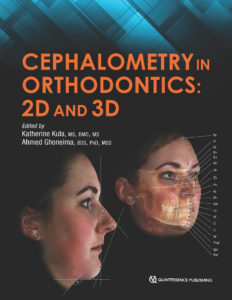 Cephalometry in Orthodontics: 2D and 3D
Cephalometry in Orthodontics: 2D and 3D
Edited by Katherine Kula and Ahmed Ghoneima
Cephalometrics has been used for decades to diagnose orthodontic problems and evaluate treatment. However, the shift from 2D to 3D radiography has left some orthodontists unsure about how to use this method effectively. This book defines and depicts all cephalometric landmarks on a skull or spine in both 2D and 3D and then identifies them on radiographs. Each major cephalometric analysis is described in detail, and the linear or angular measures are shown pictorially for better understanding. Because many orthodontists pick specific measures from various cephalometric analyses to formulate their own analysis, these measures are organized relative to the skeletal or dental structure and then compared or contrasted relative to diagnosis, growth, and treatment. Cephalometric norms (eg, age, sex, ethnicity) are also discussed relative to treatment and esthetics. The final chapter shows the application of these measures to clinical cases to teach clinicians and students how to use them effectively. As radiology transitions from 2D to 3D, it is important to evaluate the efficacy and cost-effectiveness of each in diagnosis and treatment, and this book outlines all of the relevant concerns for daily practice.
208 pp; 338 illus;©2018; ISBN 978-0-86715-762-8 (B7628); $118 Special preorder price! $94
Available Summer 2018
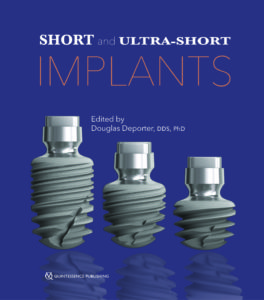 Short and Ultra-Short Implants
Short and Ultra-Short Implants
Edited by Douglas Deporter
Research has shown that short implants are not only a viable option but oftentimes a superior one that carries fewer risks for the patient and dentist, especially in resorbed jaw sites. As clinical trials continue to underscore the safety and efficacy of short implants, more dentists are considering their use with real interest, and this book provides the information clinicians need to incorporate short implants into their own practice. The book reviews the clinical effectiveness of short implants and then describes treatment protocols for the various types of short implants and their placement in different areas of the mouth. Case presentations demonstrate the recommended techniques and showcase the results.
168 pp; 334 illus; ©2018; ISBN 978-0-86715-785-7 (B7857); $85 Special preorder price! $68
Available Summer 2018
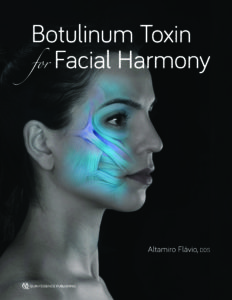 Botulinum Toxin for Facial Harmony
Botulinum Toxin for Facial Harmony
Altamiro Flávio
The mastery of dentistry brings esthetic knowledge of the face that is applicable to more than just the teeth. In the process of performing a complete facial analysis, the practitioner can identify asymmetries and concerns localized to an area—such as the forehead, eyebrows, nose, or lower face—and offer Botox therapy to increase facial harmony. This book outlines the many clinical uses for Botox, with detailed illustrations and case presentations to support each procedure. The first part of the book covers systematic facial analysis, photographic documentation, and how to plan treatment. Special attention is paid to the anatomy and physiology of the face and the identification of injection points. Detailed treatment instructions for dosage, syringe type, and needle size are included for each procedure, as well as guidelines on how to evaluate results anthropometrically to determine whether esthetic treatment goals have been met. This stunning book will change the way you approach facial analysis and widen your esthetic treatment options for patients.
160 pp; 359 illus; ©2018; ISBN 978-0-86715-787-1 (B7871); Available now! $148
Read more about Botulinum Toxin for Facial Harmony here!
Botulinum Toxin for Facial Harmony: How this Unconventional Treatment Can Expand Your Practice
Ralf J. Radlanski
Knowledge of the structures of the orofacial region from the macroscopic scale to the molecular level and pathologic changes to those structures enables practitioners to successfully treat patients or seek treatment options. This book presents the structural biologic foundations underpinning dental and oral medicine. Beginning with an overview of the anatomy of the mouth and moving on to the evolution of the oral structures and pre- and postnatal development of the oral cavity, related facial structures, and the teeth, this book describes each part of the orofacial region in terms of its morphology, tissue structure, cellular properties, and development. Functioning as both a textbook for dental students and a reference manual for experienced clinicians, this compendium of the structural biologic foundations of clinical work in dental and oral medicine allows practitioners to integrate current research in molecular biology into a solid framework of knowledge.
472 pp (softcover); 245 illus; ©2018; ISBN 978-0-86715-746-8 (B7468); Now available! $168
Sandra Tai
Clear aligners are the future of orthodontics, but digital orthodontics evolves so rapidly that it is hard to keep pace. This book approaches clear aligner treatment from a diagnosis and treatment-planning perspective, discussing time-tested orthodontic principles like biomechanics and anchorage and demonstrating how to apply them to orthodontic cases using these appliances. Each chapter explains how to use clear aligners to treat a given malocclusion and teaches clinicians how to program a suitable treatment plan using available software, how to design the digital tooth movements to match the treatment goals, and finally how execute the treatment clinically and finish the case well. This clinical handbook will prepare orthodontists and dental students to exceed patient expectations with the most esthetic orthodontic appliance currently available.
320 pp; 1,344 illus; ©2018; ISBN 978-0-86715-777-2 (B7772); Now available! $218
Read more about Clear Aligner Technique here!
Clear Aligner Technique: Bringing Orthodontic Treatment into the Digital Era
 Orofacial Pain: Guidelines for Assessment, Diagnosis, and Management
Orofacial Pain: Guidelines for Assessment, Diagnosis, and Management
American Academy of Orofacial Pain
Edited by Reny de Leeuw and Gary D. Klasser
Following in the tradition of the previous editions, this book offers the latest research and most up-to-date information on orofacial pain, including a concise overview of each condition as well as its symptoms, comorbidities, differential diagnosis, and treatment options. Every chapter has undergone critical updates to reflect the developments in the expanding field of orofacial pain, including the glossary. These updates include the addition of new diseases such as first-bite syndrome, revised information on genetic factors to reflect new insights gleaned from the OPPERA studies, expanded information on management strategies for certain conditions, and revisions to screening tools for biobehavioral factors. In addition, the classification system used in the fifth edition has been replaced and extended and includes DSM-5 codes where applicable. This book remains an essential tool for any health care provider who treats patients with orofacial pain.
336 pp (softcover); 9 illus; ©2018; ISBN 978-0-86715-768-0 (B7680); Now available! $56
Read more about Orofacial Pain: Guidelines for Assessment, Diagnosis, and Management here!
Orofacial Pain Management in Dentistry: Three Decades of the AAOP Guidelines

Dentistry and the Pregnant Patient
Daniel Ninan
To err on the side of caution, some dentists may hesitate to perform necessary procedures on pregnant patients. However, good oral health is essential to a healthy pregnancy and can help reduce prenatal complications, including preterm delivery and fetal loss. This book serves as an easy-to-use guide to help dentists of all specialties provide safe, effective care for their patients during pregnancy. The book is broken down into chapters on general treatment guidelines, pregnancy-related conditions in each organ system that may impact care, and the safety of the use of common dental drugs, including anesthetics, during pregnancy. With over 50 quick-reference charts and tables and a breakdown of treatment recommendations by trimester, this book is a must-have for any dental office.
160 pp (softcover); ©2018; ISBN 978-0-86715-779-6 (B7796); Now available! $48
Read more about Dentistry and the Pregnant Patient here!
Dental Treatment for Pregnant Patients: What’s Holding Us Back?
Current Issues in Journals
Featured article: The Laterally Closed Tunnel for the Treatment of Deep Isolated Mandibular Recessions: Surgical Technique and a Report of 24 Cases
Anton Sculean and Edward P. Allen
A 13- to 32-Year Retrospective Study of Bone Stability for Machined Dental Implants
Massimo Simion, Myron Nevins, Giulio Rasperini, and Francesco Tironi
Immediate Implant Placement in Single-Tooth Molar Extraction Sockets: A 1- to 6-Year Retrospective Clinical Study
Francesco Amato and Giorgio Polara
Prevalence of Abnormal Morphology of the Temporomandibular Joint in Asymptomatic Subjects: A Retrospective Cohort Study Utilizing Cone Beam Computed Tomography
Thiago Azário de Holanda, Rita de Cássia Costa Ribeiro de Almeida, Alexandre Emídio Ribeiro Silva, Melissa Feres Damian, and Noéli Boscato
Peri-implant Tissue Health and Bone Resorption in Patients with Immediately Loaded, Implant-Supported, Full-Arch Prostheses
Maria Menini, Paolo Setti, Paolo Pera, Francesco Pera, and Paolo Pesce
Investigation of Clinical and Laboratory Wear in Locator-Supported, Implant-Retained Overdentures
Sebastian Hahnel, Christos Alamanos, Sibylle Schneider-Feyrer, Matthias Stöckle, and Martin Rosentritt
Featured Article: Influence of Alveolar Bone Defects on the Stress Distribution in Quad Zygomatic Implant–Supported Maxillary Prosthesis
Yuanyuan Duan, Ravi Chandran, and Denise Cherry
Thematic Abstract Review: The Implant-Abutment–Soft Tissue Interface: Change Is Hard!
Thomas W. Oates
Clinical Outcomes of Vertical Distraction Osteogenesis for Dental Implantation: A Systematic Review and Meta-Analysis
Kai Zhao, Feng Wang, Wei Huang, and Yiqun Wu
Shared Genetics of Temporomandibular Disorder Pain and Neck Pain: Results of a Twin Study
Corine M. Visscher, Maarten J. Schouten, Lannie Ligthart, Caroline M.H.H. van Houtem, Ad de Jongh, and Dorret I. Boomsma
Predictors of Long-Term Temporomandibular Disorder Pain Intensity: An 8-Year Cohort Study
Flavia P. Kapos, John O. Look, Lei Zhang, James S. Hodges, and Eric L. Schiffman
Effects of a Physical Therapy Protocol in Patients with Chronic Migraine and Temporomandibular Disorders: A Randomized, Single-Blinded, Clinical Trial
Miriam Garrigós-Pedrón, Roy La Touche, Pablo Navarro-Desentre, Manuel Gracia-Naya, and Eva Segura-Ortí
Evaluation of Invisalign treatment using the Peer Assessment Rating (PAR) index
Maria del Mar Ramis, Vicente Gandia, Carlos Bellot-Arcís, Rosa Cibrian, Vanessa Peredes-Gallardo, and Jose Luis Gandia
Assessment of phonetic alterations in patients treated with F22 aligners
Angela Arreghini, Arianna Beretta, Luca Lombardo, Claudia Almoni, and Giuseppe Siciliani
Effect of composite attachment on initial force system generated during canine rotation with plastic aligners: A three-dimensional finite elements analysis
Juan Pablo Gómez Arango, Fabio Marcelo Peña, Esteban Valencia, and Carlos Eduardo Mesa
Upcoming Quintessence Events

